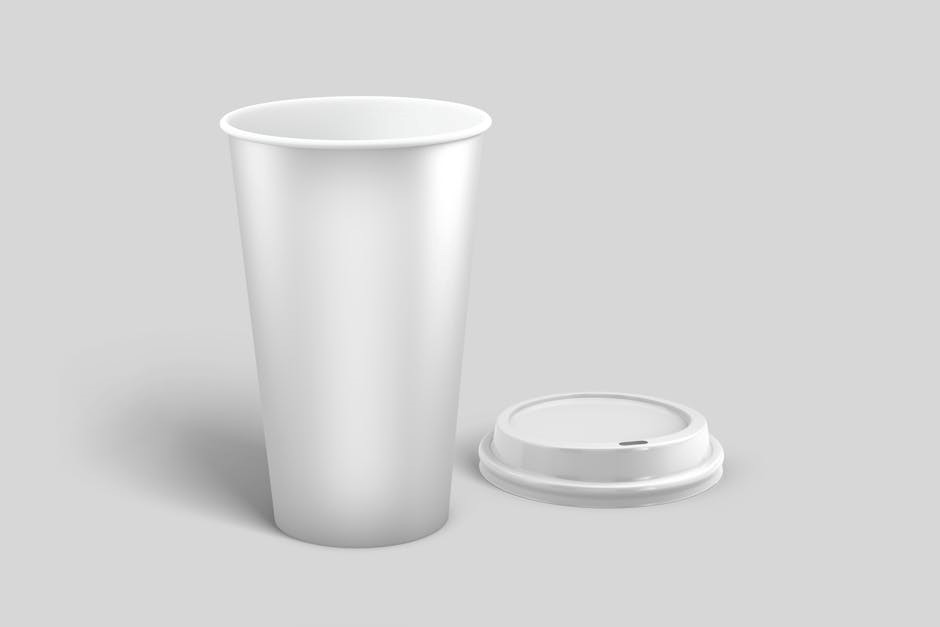
6×9 speaker templates are crucial for precise audio installations. They ensure accurate cutouts for mounting, preventing errors and guaranteeing a professional finish. Printable templates simplify the process, offering a cost-effective solution for DIY enthusiasts and professionals alike.
Understanding 6×9 Speaker Dimensions
6×9 speakers have standard dimensions, but variations exist. Templates must accurately represent these dimensions, including mounting hole placements. Knowing exact measurements prevents ill-fitting installations. Always verify template accuracy before cutting any surface for speaker placement.
Standard 6×9 Speaker Size
The “6×9” designation refers to the approximate oval shape of the speaker, not exact measurements in inches. Actual dimensions can vary slightly between manufacturers. Generally, a 6×9 speaker measures around 6 inches on the short side and 9 inches on the long side. Mounting depth also varies, impacting enclosure design. Precise measurements are critical for proper fitment and optimal sound performance within a vehicle or custom enclosure, so verify the template against your actual speaker.
Mounting Hole Specifications
Mounting hole specifications are crucial when installing 6×9 speakers. Templates often include precise locations for these holes. The spacing and diameter of mounting holes can vary between speaker brands and models. Accurate hole placement is vital to securely fasten the speaker. Misaligned holes can lead to vibrations, poor sound quality, or damage. Always double-check the template’s measurements against the speaker’s physical dimensions before drilling. Some adapters might be needed for non-standard openings or factory speaker locations.

Why Use a Printable Template?
Printable templates offer accuracy in speaker installation. They ensure proper fit and cutouts, minimizing errors. Using a template saves time and resources, leading to professional results without the need for specialized skills or expensive tools.
Ensuring Accurate Cutouts
Accurate cutouts are paramount for seamless 6×9 speaker installation, preventing issues like ill-fitting speakers or unsightly gaps. Printable templates provide a precise outline, guaranteeing the cutout matches the speaker’s dimensions. This precision minimizes the risk of rework and ensures a professional-looking installation. By using a template, users can avoid guesswork, leading to a clean and secure fit, enhancing both the audio quality and the aesthetic of the setup. Templates streamline the process, making it accessible for both seasoned installers and DIY enthusiasts.
Avoiding Installation Errors
Using a printable 6×9 speaker template significantly reduces the likelihood of installation errors. Incorrect measurements can lead to oversized or undersized cutouts, requiring additional work to correct. A template provides a precise guide, ensuring the speaker fits properly the first time. This prevents damage to the mounting surface and the speaker itself. By following a template, installers can avoid costly mistakes and ensure a professional, secure, and aesthetically pleasing installation. Templates are invaluable tools for achieving optimal results and minimizing potential complications.
Finding Printable 6×9 Speaker Templates
Locating printable 6×9 speaker templates is easy via online resources. Many manufacturers include templates with speaker purchases. These resources offer convenient access to accurate templates.
Online Resources and Downloads
The internet provides a plethora of sources for obtaining printable 6×9 speaker templates. Websites dedicated to car audio, DIY projects, and speaker manufacturers often host downloadable templates in PDF format. Search engines can be used to find specific templates for your speaker brand or general 6×9 speaker dimensions. Ensure the website is reputable. Check for user reviews to verify the accuracy of the templates before downloading and using them for your installation.
Templates Included with Speaker Purchase
Many 6×9 speaker manufacturers include a physical or printable template with the speaker purchase. This template is specifically designed for that particular speaker model, ensuring a precise fit. Check the speaker packaging or documentation for a template. Sometimes, the template is a folded piece of paper or a digital file available on the manufacturer’s website. Utilizing the included template is the most reliable method for achieving accurate cutouts and a seamless installation.

Using the Template
Accurate template usage is key. Print at the correct scale, typically 100%, to avoid sizing issues. Transfer the template precisely onto the mounting surface before cutting. Double-check measurements to ensure a proper fit.
Printing at the Correct Scale
Printing a 6×9 speaker template at the correct scale is paramount for a successful installation. Many users encounter issues with incorrectly sized templates, which leads to inaccurate cutouts. Always verify the print settings to ensure scaling is set to 100% or “actual size” within your PDF viewer. Measure the printed template against known dimensions to confirm accuracy before transferring it to your mounting surface. Failing to do so may result in a cutout that is either too large or too small, causing fitment problems.
Transferring the Template to the Mounting Surface
Accurately transferring the 6×9 speaker template onto your chosen surface is a critical step in the installation process. Secure the printed template firmly using tape or adhesive spray to prevent slippage. Trace the outline precisely with a sharp pencil or marker, ensuring a clear and defined cutting guide. Double-check the traced lines against the template before removal to catch any inconsistencies. For complex surfaces, consider using carbon paper for a more accurate transfer. Take your time to ensure the template is perfectly aligned.
Cutting Tools and Techniques
Selecting the right tools and employing proper cutting techniques are essential for clean and accurate speaker installation. A Dremel or rotary tool is often recommended, along with appropriate cutting wheels for the material being worked on.
Recommended Tools (Dremel, Rotary Tool)
For cutting speaker mounting surfaces, a Dremel or similar rotary tool is highly recommended. These tools offer precision and control, especially when working with complex shapes. Ensure you use the correct cutting bit for the material, such as metal or wood. Safety glasses are a must to protect from debris. Practice on scrap material first to get a feel for the tool’s speed and cutting depth before working on the final surface, ensuring a clean and professional result.
Cutting Metal vs. Other Materials
Cutting metal requires different techniques and tools compared to other materials like wood or plastic. For metal, use metal cutting wheels with a rotary tool, applying steady pressure to avoid overheating. Wood and plastic can be cut with various bits, but slower speeds prevent melting or splintering. Always wear safety glasses. Consider the material’s thickness; thicker materials require multiple passes for a clean cut. Deburring the edges after cutting is crucial, especially with metal, to prevent injuries and ensure a smooth speaker fit.

Considerations for Specific Car Models
Specific car models often have unique speaker mounting requirements. Factory speaker locations may differ, necessitating adapters or custom modifications. Templates assist in navigating these variations, ensuring proper fitment and avoiding vehicle damage during installation.
Adapters for Non-Standard Openings
When installing 6×9 speakers in vehicles with non-standard openings, adapters become essential. These adapters bridge the gap between the speaker’s dimensions and the car’s existing speaker cavity. Templates can be used to modify or create custom adapters ensuring a secure and aesthetically pleasing fit. They address size discrepancies and mounting hole misalignments, preventing damage to the vehicle. Adapters provide a stable platform, optimizing sound quality while maintaining the integrity of the car’s interior, and templates are vital for crafting these essential components.
Factory Speaker Locations (Rear Deck, Doors)
Factory speaker locations, often found in the rear deck or doors, present unique installation considerations for 6×9 speakers. Templates help determine if modification is needed for proper fitment. Rear deck installations may require cutting to accommodate the larger size, templates ensure accurate cuts. Door installations can involve adapters to account for depth limitations. Utilizing templates allows for assessing space constraints and planning necessary alterations. Adapting to these locations ensures seamless integration and optimized sound projection. Templates serve as guides for precise modifications, preventing structural damage and achieving a professional result.

Custom Enclosures and Speaker Rings
Custom enclosures and speaker rings elevate audio setups. Templates assist in precise cuts for building these components. They ensure correct dimensions for optimal speaker performance. This leads to improved sound quality and aesthetic appeal.
Creating Custom Speaker Rings
Crafting custom speaker rings is simplified with 6×9 speaker templates, allowing for precise cuts that ensure a snug fit for your speakers. These rings not only enhance the aesthetic appeal of your installation but also improve sound quality by reducing vibrations. Templates guide accurate creation, helping in achieving a seamless and professional look. Remember to cut notches in the 6×9 rings to allow for screw installation, if needed, for the lower rings.
Designing Enclosures with Templates
Designing enclosures becomes much easier using 6×9 speaker templates. These templates act as a guide for accurate cutting, ensuring the speakers fit perfectly within the enclosure. This precision helps optimize sound quality and protects the speakers from damage. The templates guarantee proper dimensions and mounting positions, essential for achieving the best audio performance. Use templates to design enclosures with precision, resulting in both superior sound and a professional aesthetic.
Troubleshooting Template Issues
Troubleshooting template issues involves addressing incorrectly sized printouts. Finding templates for specific speaker brands can also be challenging. Verify scale and dimensions before cutting to avoid costly mistakes during speaker installation.
Incorrectly Sized Templates
An incorrectly sized template is a common problem. This often stems from improper print settings, especially scaling options within PDF viewers. Before cutting, always verify the dimensions against the speaker specifications. An incorrectly sized template may result in a cutout that is either too large or too small for the intended speaker. This can lead to mounting issues or a compromised aesthetic look. Double-checking the scale ensures a correct fit.
Finding Templates for Specific Speaker Brands
Locating templates for specific speaker brands can sometimes be difficult. Start by checking the manufacturer’s website, as many provide downloadable templates. Online audio forums and communities are also valuable resources where users share templates. When searching, specify the brand and model number. If a template isn’t available, consider creating one from the speaker itself. Ensure accurate measurements for a perfect fit. Contacting the manufacturer directly for the template is also a good idea.
Safety Precautions
Safety is paramount when cutting. Always wear eye protection and gloves. Ensure proper ventilation when cutting materials. Secure the template firmly before cutting. Double-check measurements to avoid costly errors. Proceed with caution and take your time.
Protecting Yourself During Cutting
When working with cutting tools, especially rotary tools like Dremels, prioritizing personal safety is essential. Always wear safety glasses to shield your eyes from flying debris, and use gloves to protect your hands from sharp edges or hot materials. A dust mask can prevent inhalation of particles. Work in a well-ventilated area to minimize exposure to fumes. Securely clamp the material being cut to prevent movement and potential injury. Remember, taking precautions ensures a safe and successful installation.
Ensuring Proper Speaker Mounting
Proper speaker mounting is crucial for optimal audio performance and safety. Use appropriately sized screws to secure the speaker, avoiding over-tightening which could damage the speaker frame or mounting surface. Verify the speaker is flush with the mounting surface to prevent vibrations and distortion. If using adapters or rings, ensure they are securely attached. Consider using sound dampening materials around the speaker to minimize unwanted resonances. Double-check all connections before finalizing the installation. A secure and stable mount ensures longevity and superior sound quality.




